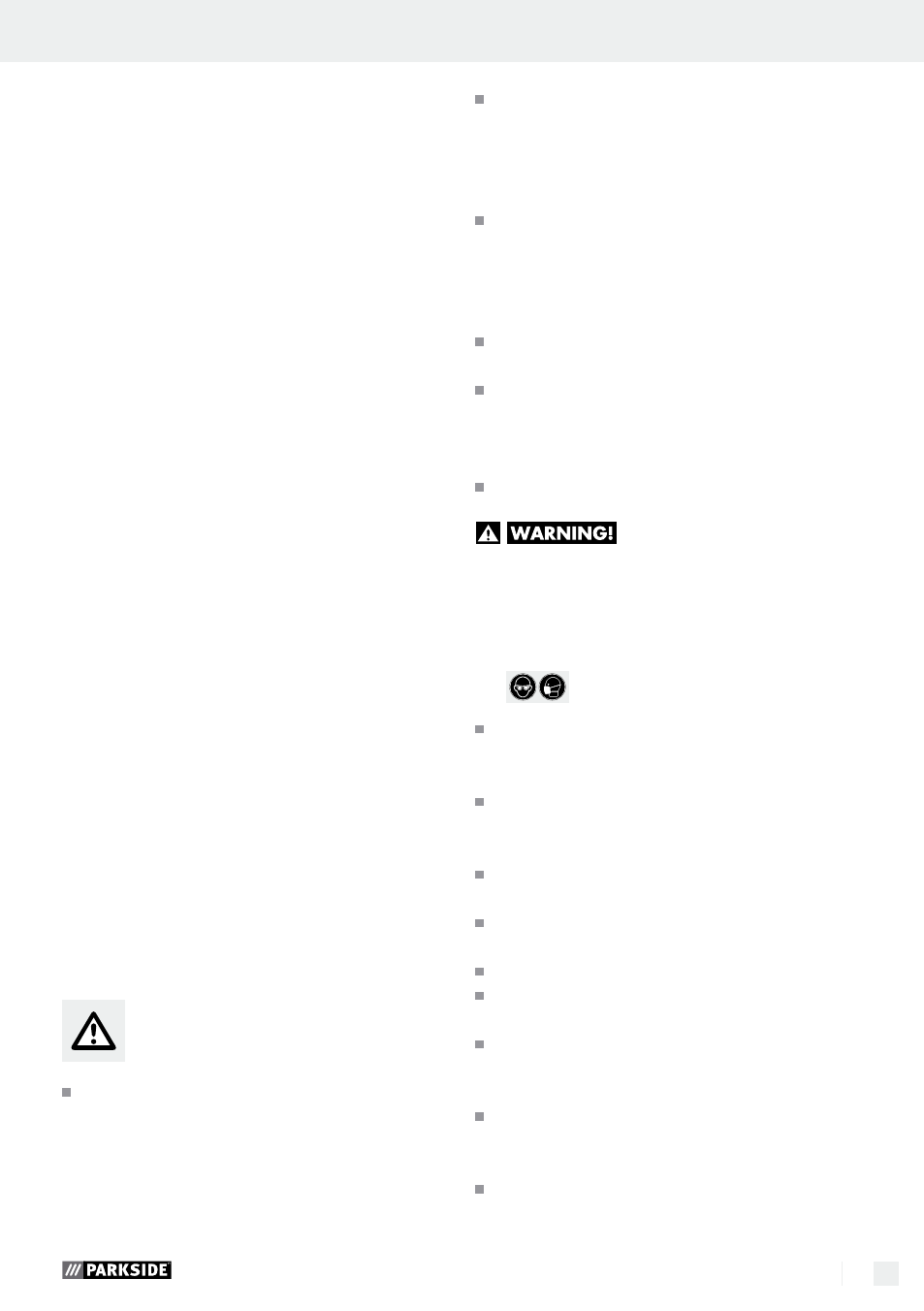General safety advice for electrical power tools, Service, Safety advice for belt sanders – Parkside PBS 600 A1 User Manual
Page 29

29
GB
the device if he or she is not familiar
with it or has not read the instructions
and advice. Electrical power tools are dan-
gerous when they are used by inexperienced
people.
e)
Look after the device carefully. Check
that moving parts are working prop-
erly and move freely. Check for any
parts that are broken or damaged
enough to detrimentally affect the
functioning of the device. Have dam-
aged parts repaired before you use
the device. Many accidents have their origins
in poorly maintained electrical power tools.
f)
Keep cutting tools clean and sharp.
Carefully maintained cutting tools with sharp
cutting edges are less likely to jam and are
easier to control.
g)
Use the electrical power tool, accesso-
ries, inserted tools etc. in accordance
with these instructions and advice, and
the stipulations drawn up for this par-
ticular type of device. In doing this, take
into account the working conditions
and the task in hand. The use of electrical
power tools for purposes other than those in-
tended can lead to dangerous situations.
5. Service
a)
Have your device repaired at the ser-
vice centre or by qualified specialist
personnel using original manufacturer
parts only. This will ensure that your device
remains safe to use.
Safety advice for
belt sanders
Hold the device by the insulated han-
dle surfaces as the sanding belt could
strike the device’s own mains lead.
Damaging a live wire could result in the metal
parts of the device also becoming live and
could lead to an electric shock.
DANGER oF FIRE FRoM FLyING SPARKS!
Sanding metal creates flying sparks. For this
reason, always make sure that nobody is placed
in any danger and that there are no inflammable
materials near the working area.
When undertaking prolonged sanding of wood,
and in particular when working on materials
that give rise to dusts that are hazardous to
health, the sander must be connected to a
suitable external dust extraction device.
Ensure that there is adequate ventilation when
working on plastic, paint, varnish etc.
The belt sander is designed for the dry sanding
of large surfaces of wood, plastic, metal and
plaster and painted surfaces. The device is to
be used for dry sanding only.
Do not sand materials containing asbestos.
Asbestos is a known carcinogen.
PoISoNoUS DUSTS!
Sanding paints containing lead, some types of
wood and metal for example may give rise to
hazardous or poisonous dusts and represents a
risk to the health of the person operating the
device and to anyone near the work area.
Wear safety glasses and a dust
protection mask!
Securely support the workpiece. Use clamps or
a vice to grip the workpiece firmly. This is much
safer than holding it with your hand.
never support yourself by placing your hands
near or in front of the device or the workpiece
surface. A slip can result in injury.
If a dangerous situation arises, pull the mains
plug immediately out of the mains socket.
Always work with the mains lead leading
away from the rear of the device.
Avoid contact with the moving sanding belt.
Do not work on moistened materials or damp
surfaces.
Always switch on the device before placing it
against the workpiece. After sanding, lift the de-
vice from the workpiece before switching it off.
When working always hold the device securely
with both hands (see Fig. E). Always keep prop-
er footing and balance.
Switch the device off and allow it to come to
a complete standstill before you put it down.
General safety advice for electrical power tools
General safety advice for electrical power tools
